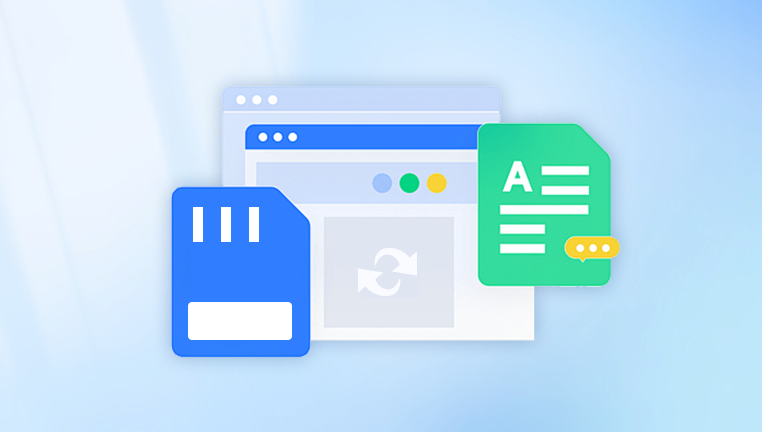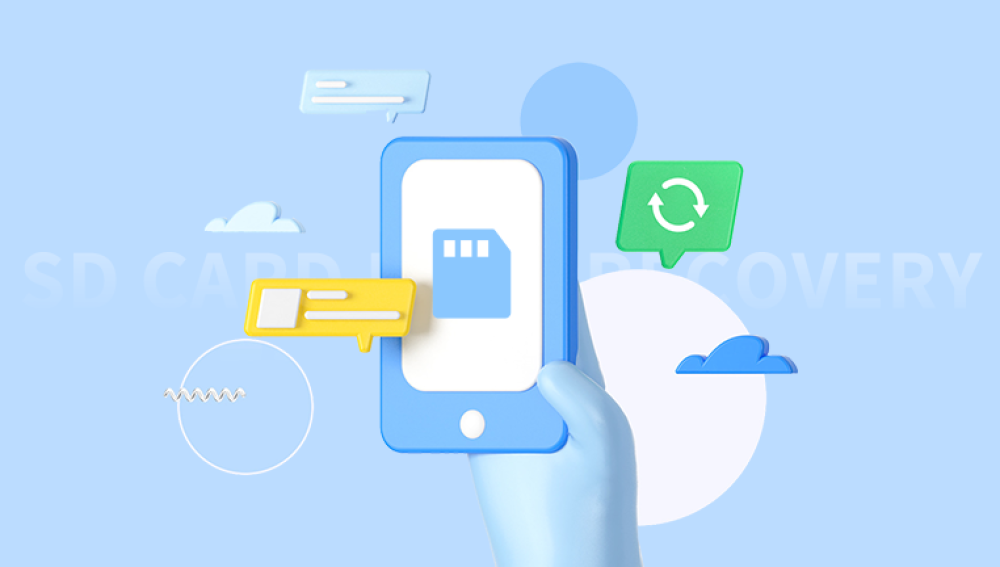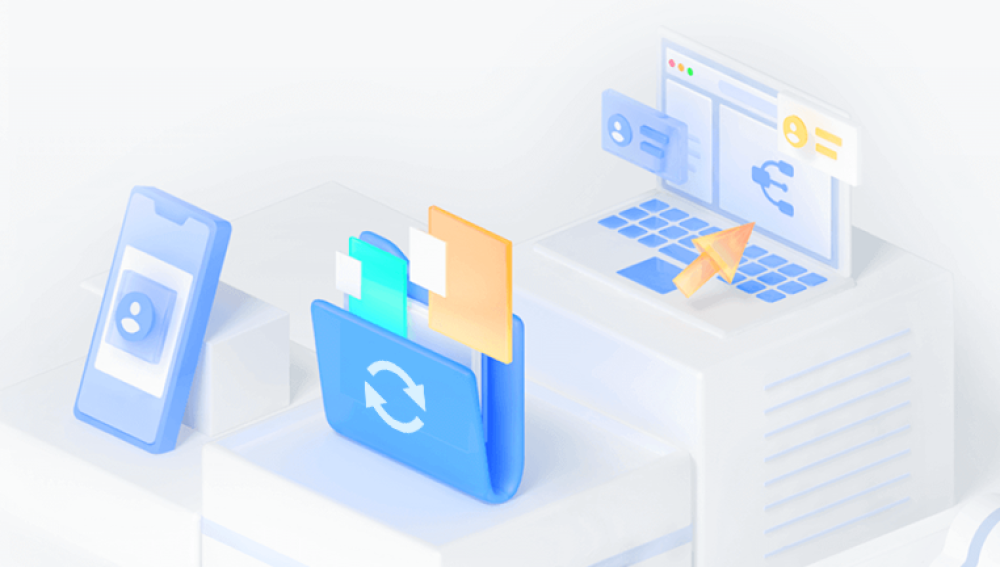They're the silent heroes behind your camera's flawless photo shoots, your drone's midair footage, your phone’s memory expansion, and even your dash cam’s recordings. Yet, they’re also surprisingly vulnerable. One wrong click, a corrupted file system, a formatting accident, or a virus can wipe out your data in an instant.
Unlike a traditional hard drive, SD cards are flash-based and have limited read/write cycles. They're often pulled out of devices without proper ejection, exposed to physical damage, power failures, or file system errors.
Common causes of data loss on SD cards include:

Accidental deletion of files
Formatting the card accidentally
Virus or malware attacks
File system corruption
Improper ejection during read/write processes
Physical damage or wear
When any of these scenarios happen, data might seem gone forever. But here’s the good news: unless the data is overwritten or the card is physically damaged beyond repair, your files may still be recoverable.
How Free SD Card Recovery Software Works
When you delete a file from an SD card or format it, the data doesn’t immediately disappear. Instead, the space it occupied is marked as "available" for new data. Until something else is written over it, recovery software can usually find and restore that data.
These tools scan the card at the sector level, looking for remnants of file signatures or indexes. Then, they reconstruct the files, allowing you to save them elsewhere.
Free recovery tools range from fully-featured solutions to more limited free versions of paid software. Choosing the right one depends on your needs and the complexity of your situation.
Choosing the Right Recovery Tool
When selecting a free SD card recovery tool, consider the following:
Ease of use: Is the interface beginner-friendly?
File type support: Does it recover the file formats you lost (images, videos, documents, etc.)?
Scan speed and thoroughness: Can it perform both quick and deep scans?
Success rate: How reliable is the software based on user experience?
Limitations: Does the free version have any restrictions on recovery volume or file types?
Let’s explore some of the most reliable and truly free tools available.
Top Free SD Card Recovery Software
1. Drecov Data Recovery
Drecov Data Recovery offers a powerful and user-friendly solution for recovering lost or deleted data from SD cards entirely free. Whether you've accidentally deleted important photos, formatted your SD card, or experienced a sudden corruption, Drecov Data Recovery helps retrieve your files quickly and safely.
Designed with simplicity in mind, the software supports a wide range of file types, including images, videos, documents, and audio files. It works with all popular SD card formats such as SDHC, SDXC, microSD, and miniSD, and is compatible with FAT16. FAT32. and exFAT file systems. This makes it ideal for recovering files from cameras, smartphones, drones, dash cams, and other portable devices.
Using Drecov Data Recovery is easy: insert your SD card via a card reader, launch the program, and start a scan. The tool offers both quick and deep scan options to ensure thorough file recovery. Once the scan completes, you can preview found files and choose what to recover.
2. PhotoRec
PhotoRec is an open-source recovery tool that excels in recovering a wide variety of file types. Despite its name, it recovers much more than just photos.
It runs through a text-based interface (command line), which can be intimidating for beginners. However, its powerful scanning engine can retrieve data even from corrupted or formatted cards.
Pros:
Completely free and open-source
Recovers over 400 file formats
Can recover data from severely damaged or formatted cards
No recovery size limit
Cons:
No graphical interface (though QPhotoRec provides a basic one)
Requires some technical understanding to use effectively
3. TestDisk
Often packaged alongside PhotoRec, TestDisk is another open-source tool that focuses on partition recovery. While it’s more of a partition repair utility than a file recovery program, it can recover deleted partitions and make non-booting disks usable again.
Pros:
Best for partition-level recovery
Completely free and open-source
Useful for repairing damaged SD cards
Cons:
Command-line interface
Not ideal for recovering individual files unless paired with PhotoRec
4. Disk Drill (Free Version)
Disk Drill offers a modern, user-friendly interface with powerful recovery capabilities. While the premium version has no recovery limits, the free version allows recovery of up to 500MB on Windows (unlimited preview only on Mac).
Pros:
Sleek, intuitive interface
Supports a wide range of file systems and storage devices
Includes disk health monitoring tools
Cons:
Recovery limited to 500MB in the free version (Windows)
Many features locked behind the Pro upgrade
5. EaseUS Data Recovery Wizard (Free Version)
EaseUS is a trusted name in data recovery, and its free version allows recovery of up to 2GB of data. It’s designed for users who need a quick and straightforward tool with a graphical interface.
Pros:
User-friendly and visually clear interface
Recovers a wide variety of file types
Two recovery modes: Quick and Deep scan
Cons:
2GB recovery limit unless upgraded
Free version may prompt often for the paid version
6. MiniTool Power Data Recovery (Free Edition)
MiniTool's free version provides a decent recovery experience with a 1GB limit. It's best suited for small recoveries or previewing what might be salvageable before upgrading.
Pros:
Easy to navigate
Good preview capabilities
Supports a wide range of devices and file formats
Cons:
Limited recovery volume
Advanced features require payment
7. iCare Data Recovery Free
iCare offers a completely free edition (not a trial), making it ideal for users who want to recover without pressure to upgrade. It supports recovery from deleted files, formatted cards, and RAW file systems.
Pros:
No recovery cap in the free version
Easy to use
Good support for common file formats
Cons:
Interface is a bit dated
May struggle with deep scans compared to more advanced tools
8. Puran File Recovery
Puran is a lesser-known but efficient free tool for Windows. It features multiple scanning modes and supports almost all types of storage media.
Pros:
Free for both personal and commercial use
Deep scan and full scan modes
Recognizes over 50 file types
Cons:
Windows-only
Interface is outdated
9. ADRC Data Recovery Tools
ADRC is a compact utility suite that’s portable and works on older systems. It's ideal for recovering files from SD cards without installation.
Pros:
Lightweight and portable
Simple and fast recovery
Works well on older systems
Cons:
Basic UI
Not actively developed
Best Practices for SD Card Recovery
Regardless of the tool you choose, the recovery process benefits greatly from smart handling of your card and system. Here’s how to increase your chances of successful recovery:
1. Stop Using the SD Card Immediately
Once data is lost, continuing to use the SD card can overwrite the deleted files. Remove it from the device and avoid writing anything new until recovery is complete.
2. Use a Reliable Card Reader
Use a quality card reader to connect your SD card to your computer. A faulty reader may interrupt scanning or fail to read the card properly.
3. Choose the Right Scan Type
Most recovery tools offer a quick scan and a deep scan. Start with a quick scan—if it doesn’t yield the desired results, opt for a deep scan which takes longer but is more thorough.
4. Preview Files Before Recovery
Many tools offer previews of recoverable files. This helps ensure you're recovering the correct data and saves time.
5. Save Recovered Files to a Different Drive
Never save recovered files back to the same SD card. Doing so risks overwriting other lost data. Use your computer’s internal storage or an external drive instead.
6. Be Patient
Deep scans can take time, especially on larger SD cards. Let the process run uninterrupted for the best results.
What to Do If Free Tools Don’t Work
Free tools are great, but they’re not magic. In cases of severe corruption, physical damage, or deeply fragmented files, they may fall short. If you've tried multiple tools with no success, consider the following:
Use professional-grade software: Some paid tools offer free previews, so you can confirm recoverability before purchasing.
Contact a data recovery specialist: If the SD card is physically damaged or the data is extremely valuable (e.g., wedding photos, business files), professional services may be the safest bet.
Avoid DIY if the card is making noises or feels hot: These are signs of hardware failure. Further use can worsen the damage.
Protecting Your SD Card Data in the Future
Prevention is always better than recovery. Here are some habits to protect your SD card and reduce the need for recovery tools in the future:
Always eject safely: Whether on your phone or computer, use the proper unmount/eject option before removing the card.
Avoid filling the card completely: Leave some space to prevent file system errors and reduce wear.
Use high-quality cards: Trusted brands like SanDisk, Samsung, Lexar, and Kingston offer better longevity and reliability.
Don’t use one card across multiple devices: Switching between devices can increase the risk of corruption.
Back up your files regularly: Consider setting up automatic backups or manually transferring files to your computer or cloud storage.
Data loss on an SD card can feel like a catastrophe, especially when precious memories or important files vanish without warning. Thankfully, a wide array of free SD card recovery software exists to help salvage your files and restore peace of mind.
From beginner-friendly tools like Recuva to powerful open-source solutions like PhotoRec, there’s something for every situation. By acting quickly, avoiding overwriting, and using the right recovery tool, you stand a strong chance of retrieving your lost data.
And once you’re back on track, adopting a few best practices can help ensure you never find yourself in the same predicament again.




